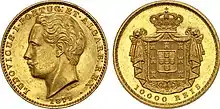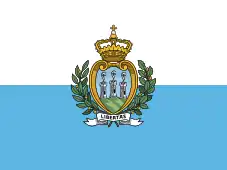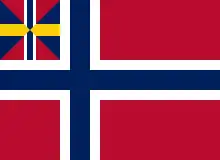Luís I of Portugal
Dom Luís I (Portuguese pronunciation: [luˈiʃ]; Louis; 31 October 1838 – 19 October 1889), known as the Popular (Portuguese: o Popular) was King of Portugal from 1861 to 1889. The second son of Queen Maria II and her consort, King Ferdinand, he acceded to the throne upon the death of his elder brother King Pedro V. He was a member of the ruling House of Braganza.[1]
| Luís I | |
|---|---|
 Photograph by Augusto Bobone c. 1880s | |
| King of Portugal | |
| Reign | 11 November 1861 – 19 October 1889 |
| Acclamation | 22 December 1861 |
| Predecessor | Pedro V |
| Successor | Carlos I |
| Prime Ministers | |
| Born | 31 October 1838 Necessidades Palace, Lisbon, Portugal |
| Died | 19 October 1889 (aged 50) Citadel Palace, Cascais, Portugal |
| Burial | |
| Spouse | |
| Issue | |
| House | Braganza[1] |
| Father | Ferdinand of Saxe-Coburg and Gotha |
| Mother | Maria II of Portugal |
| Religion | Roman Catholicism |
| Signature | |
Reign
.png.webp)
Luís was a cultured man who wrote vernacular poetry, but had no distinguishing gifts in the politics into which he was thrust by the death of his older brother Pedro V in 1861. Luís's domestic reign was a series of transitional governments called Rotativism formed at various times by the Progressistas (Liberals) and the Regeneradores (Conservatives), the party generally favoured by King Luís, who secured their long term in office after 1881. Despite a flirtation with the Spanish succession prior to the Franco-Prussian War of 1870–71, Luís's reign was otherwise one of domestic stagnation as Portugal fell ever farther behind the nations of western Europe in terms of public education, political stability, technological progress and economic prosperity. In colonial affairs, Delagoa Bay was confirmed as a Portuguese possession in 1875, whilst Belgian activities in the Congo and the 1890 British Ultimatum prevented the Portuguese from colonizing modern-day Botswana in order to establish a link between Portuguese Angola and Portuguese Mozambique at the peak of the Scramble for Africa.
Personal interests
Luís was also very keen with literature, not only with books in Portuguese but also in English. He was the first to bring fully translated Shakespearean works to Portugal, such as The Merchant of Venice, Richard III and Othello, the Moor of Venice. His best-known work in Portugal was his translation of Hamlet.
Marriage and descendants
_-_Jean_Laurent.png.webp)
In June 1862, Luís asked Archduchess Maria Theresa of Austria (1845–1927), a daughter of Archduke Albert, Duke of Teschen and Princess Hildegard of Bavaria, to marry him in a letter sent to her father. It was urgent for him to get married as his older brother, King Pedro V, had died in November 1861, without issue and two of his younger brothers, João and Fernando, followed him shortly after, which left the Braganza dynasty almost without heirs. Luís had already selected a number of brides including Princess Marie of Hohenzollern-Sigmaringen (1845-1912), sister of his late sister-in-law Stephanie, Duchess Sophie Charlotte in Bavaria (1847-1897), Princess Maria Pia of Savoy (1847-1911) and also considered some Austrian archduchesses, Maria Theresa being one of them, but didn't know which one to choose. So he sent letters to his cousin, Queen Victoria, and his great-uncle, King Leopold I of Belgium, to ask for their advice. Both agreed that the best choice was Maria Theresa. Thus, King Luís sent his letter. However, his wish was not fulfilled as her father, Archduke Albert, thought she was too young at the time (she was one month away from turning 17) and needed to finish her education. Two weeks after, Luís asked for the hand of Princess Maria Pia of Savoy and, this time, was accepted, even though Maria Pia, born in 1847, was even younger than Maria Theresa.[2]

Luís married Maria Pia, the daughter of Victor Emmanuel II of Italy and Maria Adelaide of Austria, on 6 October 1862. They both had a deep love at first, but Luis's countless mistresses led Maria Pia to depression. Together they had two sons:[3]
- Dom Carlos, Prince Royal of Portugal (28 September 1863 – 1 February 1908), successor as King Carlos I; murdered by the Carbonária.
- Dom Afonso, Prince Royal of Portugal (31 July 1865 – 21 February 1920), Infante of Portugal, Duke of Porto, Viceroy of India, and after 1908 Prince Royal.
Honours
He received the following orders:[4]
 Austria: Grand Cross of the Royal Hungarian Order of St. Stephen, 1854[5]
Austria: Grand Cross of the Royal Hungarian Order of St. Stephen, 1854[5].svg.png.webp) Baden:[6]
Baden:[6]
- Knight of the House Order of Fidelity, 1885
- Knight of the Order of Berthold the First, 1885
.svg.png.webp) Bavaria: Knight of St. Hubert, 1867[7]
Bavaria: Knight of St. Hubert, 1867[7].svg.png.webp) Belgium:
Belgium:
 Order of Leoopold (Grand Cordon) (Belgium) , 9 July 1854[8]
Order of Leoopold (Grand Cordon) (Belgium) , 9 July 1854[8]
.svg.png.webp) Brazil:
Brazil:
 National Order of the Southern Cross (Grand Collar) [lower-alpha 1] (Brazil) , 1861
National Order of the Southern Cross (Grand Collar) [lower-alpha 1] (Brazil) , 1861- Grand Cross of the Rose, with Collar
- Grand Cross of the Order of Pedro I, with Collar
 Denmark: Knight of the Elephant, 18 April 1864[9]
Denmark: Knight of the Elephant, 18 April 1864[9].svg.png.webp)
.svg.png.webp)
.svg.png.webp) Ernestine duchies: Grand Cross of the Saxe-Ernestine House Order, 1854[10]
Ernestine duchies: Grand Cross of the Saxe-Ernestine House Order, 1854[10].svg.png.webp) France:
France:
 Legion of Honour (Grand Cross) [lower-alpha 2] (France)
Legion of Honour (Grand Cross) [lower-alpha 2] (France)- Military Medal
.svg.png.webp) Greece: Grand Cross of the Redeemer
Greece: Grand Cross of the Redeemer Hanover:[11]
Hanover:[11]
- Knight of St. George, 1861
- Grand Cross of the Royal Guelphic Order
.svg.png.webp) Hawaii: Grand Cross of the Order of Kamehameha I, 19 August 1881[12]
Hawaii: Grand Cross of the Order of Kamehameha I, 19 August 1881[12] Hesse and by Rhine: Grand Cross of the Ludwig Order, 7 December 1865[13]
Hesse and by Rhine: Grand Cross of the Ludwig Order, 7 December 1865[13].svg.png.webp) Japan: Grand Cordon of the Order of the Chrysanthemum, 20 April 1883[14]
Japan: Grand Cordon of the Order of the Chrysanthemum, 20 April 1883[14] Liberia: Grand Cross of the Order of African Redemption
Liberia: Grand Cross of the Order of African Redemption Mecklenburg: Grand Cross of the Wendish Crown, with Crown in Ore and Collar
Mecklenburg: Grand Cross of the Wendish Crown, with Crown in Ore and Collar.svg.png.webp) Mexico: Grand Cross of the Mexican Eagle, with Collar, 1865[15]
Mexico: Grand Cross of the Mexican Eagle, with Collar, 1865[15] Monaco: Grand Cross of St. Charles
Monaco: Grand Cross of St. Charles Netherlands: Grand Cross of the Netherlands Lion
Netherlands: Grand Cross of the Netherlands Lion.svg.png.webp) Ottoman Empire:
Ottoman Empire:  Order of the Medjidie (Class I: Gold) [lower-alpha 3] (Ottoman Empire) , 1st Class in Diamonds
Order of the Medjidie (Class I: Gold) [lower-alpha 3] (Ottoman Empire) , 1st Class in Diamonds.svg.png.webp) Tunisia: Grand Cordon of the Order of Glory, in Diamonds
Tunisia: Grand Cordon of the Order of Glory, in Diamonds.svg.png.webp) Prussia: Knight of the Black Eagle, 24 July 1854; with Collar, 1862[16]
Prussia: Knight of the Black Eagle, 24 July 1854; with Collar, 1862[16] Romania:
Romania:
 Russia:
Russia:
 San Marino: Grand Cross of San Marino
San Marino: Grand Cross of San Marino.svg.png.webp) Sardinia:
Sardinia:
- Knight of the Annunciation, 15 July 1855[17]
- Grand Cross of Saints Maurice and Lazarus, 15 July 1855
.svg.png.webp) Sovereign Military Order of Malta: Bailiff Grand Cross of Honour and Devotion
Sovereign Military Order of Malta: Bailiff Grand Cross of Honour and Devotion.svg.png.webp) Saxe-Weimar-Eisenach: Grand Cross of the White Falcon, 1 August 1854[18]
Saxe-Weimar-Eisenach: Grand Cross of the White Falcon, 1 August 1854[18].svg.png.webp) Saxony: Knight of the Rue Crown, 1854[19]
Saxony: Knight of the Rue Crown, 1854[19].svg.png.webp) Serbia: Grand Cross of the Cross of Takovo
Serbia: Grand Cross of the Cross of Takovo.svg.png.webp) Siam: Knight of the Nine Gems
Siam: Knight of the Nine Gems.svg.png.webp) Spain:
Spain:
- Knight of the Golden Fleece, 28 November 1861[20]
- Grand Cross of Naval Merit, with Red Decoration, 1877[21]
- Grand Cross of the Military Order of St. Ferdinand
- Grand Cross of Military Merit
.svg.png.webp)
 Sweden-Norway:
Sweden-Norway:
- Knight of the Seraphim, 27 November 1861[22]
- Grand Cross of St. Olav, 28 December 1872[23]
 United Kingdom: Stranger Knight of the Garter, 17 June 1865[24]
United Kingdom: Stranger Knight of the Garter, 17 June 1865[24] Württemberg: Grand Cross of the Württemberg Crown, 1865[25]
Württemberg: Grand Cross of the Württemberg Crown, 1865[25]
Ancestry
Notes
- Portuguese: Ordem Nacional do Cruzeiro do Sul – Grande Colar
- French: Légion d'honneur - Grand-croix
- Presented by the Sultan
References
- "While remaining patrilineal dynasts of the House of Saxe-Coburg and Gotha according to pp. 88, 116 of the 1944 Almanach de Gotha, Title 1, Chapter 1, Article 5 of the 1838 Portuguese constitution declared, with respect to Ferdinand II of Portugal's issue by his first wife, that 'the Most Serene House of Braganza is the reigning house of Portugal and continues through the Person of the Lady Queen Maria II'. Thus their mutual descendants constitute the Coburg line of the House of Braganza"
- Lopes, Maria Antónia (2013). Rainhas Que o Povo Amou - Estefânia de Hohenzollern e Maria Pia de Sabóia. Temas e Debates. p. 121.
- Lencastre, Isabel (2012). Bastardos Reais: Os filhos ilegítimos dos Reis de Portugal. Oficina do Livro. p. 149.
- Albano da Silveira Pinto (1883). "Serenissima Casa de Bragança". Resenha das Familias Titulares e Grandes des Portugal (in Portuguese). Lisbon: Empreza Editora de Francisco Arthur Da Silva. p. xiv.
- "A Szent István Rend tagjai" Archived 22 December 2010 at the Wayback Machine
- Staatshandbuch für das Großherzogtum Baden (1888), "Großherzogliche Orden", pp. 62, 74
- Hof- und Staatshandbuch des Königreichs Bayern: 1877. Landesamt. 1877. p. 8.
- Ferdinand Veldekens (1858). Le livre d'or de l'ordre de Léopold et de la croix de fer. lelong. p. 207.
- Jørgen Pedersen (2009). Riddere af Elefantordenen, 1559–2009 (in Danish). Syddansk Universitetsforlag. p. 272. ISBN 978-87-7674-434-2.
- Staatshandbücher für das Herzogtum Sachsen-Coburg und Gotha (1884), "Herzogliche Sachsen-Ernestinischer Hausorden" p. 29
- Hof- und Staats-Handbuch des Königreich Hannover (1865), "Königliche Orden und Ehrenzeichen" p. 38, 73
- King Kalakaua's Tour Round the World (Honolulu, 1881) p. 74
- Staatshandbuch für das Großherzogtum Hessen und bei Rhein (1879), "Großherzogliche Orden und Ehrenzeichen ", p. 12
- 刑部芳則 (2017). 明治時代の勲章外交儀礼 (PDF) (in Japanese). 明治聖徳記念学会紀要. p. 143.
- "Seccion IV: Ordenes del Imperio", Almanaque imperial para el año 1866 (in Spanish), 1866, pp. 214–236, 242–243, retrieved 29 April 2020
- "Schwarzer Adler-orden", Königlich Preussische Ordensliste (in German), vol. 1, Berlin: R. v. Deder, 1877, p. 10
- Cibrario, Luigi (1869). Notizia storica del nobilissimo ordine supremo della santissima Annunziata. Sunto degli statuti, catalogo dei cavalieri (in Italian). Eredi Botta. p. 115. Retrieved 2019-03-04.
- Staatshandbuch für das Großherzogtum Sachsen / Sachsen-Weimar-Eisenach Archived 2019-08-22 at the Wayback Machine (1859), "Großherzogliche Hausorden" p. 13
- Staatshandbuch für den Freistaat Sachsen (1867) (in German), "Königliche Ritter-Orden", p. 4
- "Caballeros de la insigne orden del Toison de Oro", Guóa Oficial de España (in Spanish), 1875, p. 102, retrieved 4 March 2019
- "Caballeros Grandes Cruces de la Orden del Mérito Naval", Guóa Oficial de España (in Spanish), 1887, p. 579, retrieved 26 April 2020
- Sveriges statskalender (in Swedish), 1881, p. 377, retrieved 2019-02-20 – via runeberg.org
- Norges statskalender (in Norwegian), 1886, p. 234, archived from the original on 2020-07-26, retrieved 2019-02-20 – via genealogi.no
- Shaw, Wm. A. (1906) The Knights of England, I, London, p. 62
- Hof- und Staats-Handbuch des Königreich Württemberg (1866), "Königliche Orden" p. 31
_-_Lesser.png.webp)
